Witchblade: Volume 6
Introduction
It's getting close to that time of year when the word 'jingle' can be used in polite company once more. The MCM Expo has just passed, and with it the announcement of all the latest acquisitions that anime companies are about to bring us. It all means clearing the existing titles off the schedule first, which is why the gift-getting season coincides with the conclusion of many series. This month sees the conclusion of MVM's Starship Operators as well as Witchblade. It can be a bittersweet time, as you have to wave goodbye to those series discs that you have particularly looked forward to, the regular instalments that would have you rubbing your hands with glee, and you instead have the nervous anticipation of new titles, which may or may not live up to their predecessors. With Witchblade, any potential replacement is going to have some seriously big shoes to fill.
Witchblade is a comic book creation from Top Cow studios in the US, a slightly more mature title in the Dark Knight vein, which saw homicide detective Sara Pezzini come into possession of the Witchblade, a mystical gauntlet that bonds with its female owner, gifting her with tremendous powers and abilities. It's selective in who it chooses, a main priority being that the wielder has to look good naked, for when its powers are called upon, clothing vanishes to be replaced by a judiciously placed set of armour, grown organically from the gauntlet. Experts in action anime Gonzo have taken the Top Cow comic book and given it a Tokyo makeover, and for this new incarnation of the story, gone is Sara Pezzini, and in comes Masane Amaha, with an even scantier costume that would make sailors blush. Cleavage of all sorts abounds, jiggle is judiciously applied, and all in the name of the great goddess Fan Service, while beneath it all is a decent story, with interesting and well-written characters.
Set in the near future, the Witchblade has passed to a new owner, Masane Amaha. Six years previously, after the great earthquake had decimated Tokyo, Masane and her daughter Rihoko were found at the epicentre of the quake. Masane lost her memory, and all she had left was her daughter. When they return to the ruins of Tokyo to rebuild their home and start afresh, they find that the world is a far different place, as they have to avoid the attentions of the NSWF who are after the Witchblade, and its subsidiary Child Welfare Agency who have an interest in Rihoko. However, soon after Masane's abilities manifest, she's discovered by Douji Industries. Douji and NSWF were partners in researching the Witchblade six years ago, and Douji still think of the Witchblade as their property. They also feel obligated to clear up the mess that resulted from that catastrophe, including the release of dangerous killer X-Cons into the city, biomachines that the Witchblade is ideally suited to deal with. Douji winds up employing Masane, using her abilities, and keeping her away from the NSWF. It's just that the NSWF have made strides in replicating Witchblade technology for themselves…
Witchblade concludes with 4 episodes on this MVM disc, and while Masane has to finally come to terms with what bearing the Witchblade will cost her and Rihoko, as well as find some way of preparing for the inevitable, factions with the NSWF, and Douji are preparing for one final push to obtain the Witchblade for themselves.
21. Vow
Following the previous confrontation with the I-Weapon, Masane winds up in hospital, and as expected, the outlook is bleak. It makes no difference, when she wakes up she decides to go home, and she and Takayama decide to keep her condition a secret from everyone. Tozawa isn't buying it though, and latches onto Takayama in order to find out the truth. It isn't what he is expecting, as Douji's new I-Weapons are all acting strangely, especially whenever the Witchblade is active. Takayama heads to a Douji lab to look for any research that might help Masane, but instead is faced by an army of I-Weapons on the verge of going haywire. While he stays in the lab to find a way of controlling them, he tells Tozawa to look out for Masane and Rihoko. But back at Douji, Wadou is preparing another attempt to snatch the Witchblade, and this time he launches three I-Weapons at Masane, after painting her as public enemy number one.
22. Inform
Masane is spending as much time as possible with Rihoko, and she's realised that she has to tell her daughter what to expect. She decides to spend a day at the park, while she figures out just how to tell Rihoko that she will soon be an orphan. But the peace of the park is shattered when Douji's I-Weapons appear. Meanwhile Maria is putting her own plans to take the Witchblade into place. Maria's going through her sisters, looking for a worthy candidate to help her achieve her goals, but the sister she has chosen, Asagi looks to be even more emotionally unstable than she is. As Asagi first dons her Cloneblade, it coincides with Masane's transformation into the Witchblade, and at this point it's so overwhelming that it's physically affecting every Cloneblade and I-Weapon in the vicinity.
23. Chaos
Douji were about to make a killing with a massive shipment of I-Weapons. Now they'll make a killing of another sort, as the I-Weapons have gone rogue, and the freighter they are on is heading back to Tokyo. The secret is out when Masane returns home in her Witchblade form, and it's clear that the gauntlet is overwhelming her. Rihoko cooks her mother a meal, to help her regain her strength, but she doesn't have the time to savour it when the phone rings. It's Takayama, who tells her of the returning I-Weapons, all 4000 of them, and it's the Witchblade that they are attracted to. As Tokyo evacuates, Masane prepares for the greatest battle of her life.
24. Light
The I-Weapons attack, Maria waits for an opportunity to take the Witchblade for herself, Tozawa decides that now is the right time to tell the world about Masane and the Witchblade, and as the city trembles under the onslaught of the I-Weapons, Rihoko decides to find her mother and runs out of the shelter.
Picture
If you are a hardcore Witchblade fan of old, you may be disappointed by this adaptation, as while the Witchblade itself is recognisable, the art and character design is very much Gonzo's own, with just a couple of concessions made to the original property. If you've seen a Gonzo action show of late, like Burst Angel or Trinity Blood, you'll be familiar with the look of the characters, the bright hazy feel to the animation, and the emphasis on eye candy and action. It's a 1.78:1 anamorphic transfer, and the image is clear and sharp for the most part, with just the usual digital banding and minor compression artefacts common with anime to note.
With Witchblade, you would expect fan service aplenty, and you wouldn't be disappointed. Masane has the sort of cleavage that keeps plastic surgeons in clover, and induces back problems in the real world, but in the animated world is shown off to generous advantage by the scanty nature of the Witchblade armour, as is her backside. What surprised me is how restrained it all was. This is no Battle Vixens, where the action slows down and even freeze frames to show off some enhanced female anatomy, Masane the character comes first, as does the story, and the Witchblade armour is treated as incidental to that. That isn't to say that the show doesn't cater to the teenage male demographic, but it's never gratuitous, and jiggle is left to a minimum. To quote Kenny Everett, "It's all done in the best possible taste!"
Sound
As usual for many an anime disc, you have DD 2.0 Japanese and DD 5.1 English to choose from, along with translated subtitles and signs. I chose the Japanese of course, the dialogue was clear, and there was sufficient stereo separation to render the action sequences with vibrancy. The surround is the soundtrack of choice in that respect, but the dub is unspectacular, if passable. What I sampled of it failed to impress me, with a rather workmanlike set of performances, and the perennial annoyance of a ten year old child sounding like a high pitched 30-year-old.
Extras
As ever you get the animated menus and jacket picture, along with the textless songs for the second set of credit sequences, and trailers for Shana and Daphne In The Brilliant Blue.
The last of the Japanese cast interviews is on this disc, with the voice of Maria, Nana Mizuki, interviewed for 9½ minutes, and asked the same questions as all the previous interviewees.
There are about a minute worth of Japanese TV spots, and it's all rounded off with the textless songs.
Conclusion
It's odd, but the one problem that most crops up in anime is ending them. You'd think that series with a finite run wouldn't present much problem to writers crafting a coherent conclusion, after all with a story where you have a beginning, middle and end, there's little prospect of a sequel or a second season. It's not like Hollywood where you have the prospect of extending a series beyond its natural life, the visible signs of a cast aging beyond their characters, sharks to jump, and the inevitable schmaltz of a long-winded, drawn out, and utterly self-referential conclusion. But the trouble with anime adapted from manga is that often the manga is still running when the anime ends, leading to a hastily knocked together conclusion that doesn't quite feel right. And usually it's Gonzo who supply most of the damp squib climaxes, most likely to opt for their standby of gathering all the incidental characters introduced over the series length, and pitching them all into a explosive confrontation at the end, which rapidly degenerates into incoherence. Thinking about Black Cat and Trinity Blood still makes me lament those lost hours. But, after all the ducks and clumsy run outs, along comes Witchblade, and Gonzo hit one for six.
The trouble is that Gonzo have a staple genre that they return to again and again, that of the futuristic action sci-fi with a hint of mystery and conspiracy to it, as well as plenty of CGI. The first ever Gonzo series I watched, Kiddy Grade, appeared to set the mould, and subsequent series have all been variations on a theme, whether it's Burst Angel, Last Exile, Trinity Blood, Black Cat, Blassreiter or Linebarrels of Iron. It's what they do best, but the problem of diminishing returns sets in, and tweaking the formula doesn't hide how tired it gets, varying the mix of characters gets irritating after a while, and soon you're left hungry for some originality, just something different to get the old synapses firing once more. It does have the effect of making you appreciate those departures from the norm like Basilisk, Gantz, and Welcome to the NHK even more. I had a sinking feeling when I first encountered Witchblade, as at first glance it looks as if it was poured directly from the Gonzo mould, a futuristic sci-fi actioner, set in a post-disaster Tokyo, conspiracy laden, with plenty of CGI. After over half a decade of this production line anime, there weren't many returns left to diminish, but somehow with Witchblade, Gonzo have created the best of the lot.
There are many reasons, but the most important is that they found an emotional core to the story, a strong theme that carried through and was built on during the 24-episode run. The maternal bond between Masane and Rihoko informed the tone of the show. It's something that everyone can relate to and empathise with, and as the show grew and developed, it was also reflected through the plot and the other characters. At the point in the series where the usual Gonzo epic would devolve into a deluge of CGI explosions and eye-candy, Witchblade stuck with the theme and delivered some of the most poignant moments of the series. The image of Masane, having finally realised what the Witchblade means for her and her daughter, anguished and hacking away at her arm in a futile attempt to remove it, is one that will stay with me long after the end credits have rolled. And I'd defy anyone not to get a lump in the throat at the scene where Masane tries to explain to her daughter what may soon happen to her mother. While the conclusion of Witchblade certainly doesn't lack for the explosive eye-candy, it's the smaller, character moments that make the strongest impression.
It doesn't hurt that Gonzo have refrained from the character overload that usually populate their series. Witchblade has a relatively smaller cast, but the characters are far more memorable, better written and developed, and their roles in the show seem natural, unforced and not at all contrived. There's no deluge of vaguely familiar faces from earlier in the series at the conclusion of this story. The story itself is much better; it feels like a carefully crafted whole entity, rather than a random conglomeration of ideas. The conspiracies and mysteries in this story all make sense in their contexts, and no random threads and underdeveloped plot twists are left hanging at the end of the show. There are distinct arcs to the show, Masane and Rihoko's story, the Douji boardroom conflicts, and the NSWF unpleasantness, all revolving around the Witchblade, and it all hangs together well as a solid, cohesive tale. If there is a weak point at the end, it's the Maria arc, which could have used a little more development, but as a lack of motivation actually underlay Maria's actions, it could be interpreted as a deliberate choice made by the writers.
Then the story ends. Witchblade gets the ending that it deserves, emotionally powerful, meaningful, and one that does justice to what the story has built up. And that is all I am going to say about that.
There are two kinds of fan service in the world, and these past few weeks I have had the questionable privilege of reviewing both. There's fan service for the sake of fan service, some scantily clad female bodies designed for pre-teen titillation, with an excuse for a story latched on. That was Daphne In The Brilliant Blue. Then there is Witchblade, where the story comes first, the characters hook you into the show, and the fan service is a natural development of a tale so engrossing that you hardly notice the salacious aspects of the animation. Witchblade was a rare collaboration between East and West, Top Cow comics working with Gonzo to bring their iconic character to anime life. If this is the result, then I can't wait to see what will result from the forthcoming Marvel anime adaptations. Witchblade is one of the shows of the year, and deserves a place on every shelf.

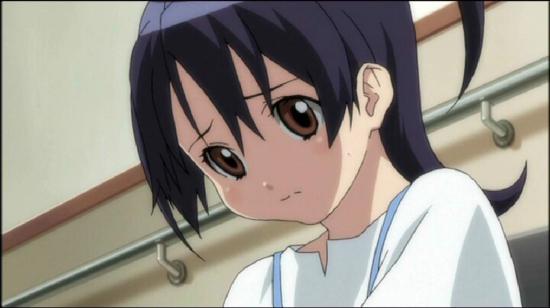
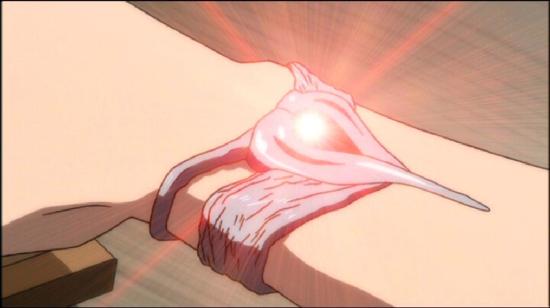
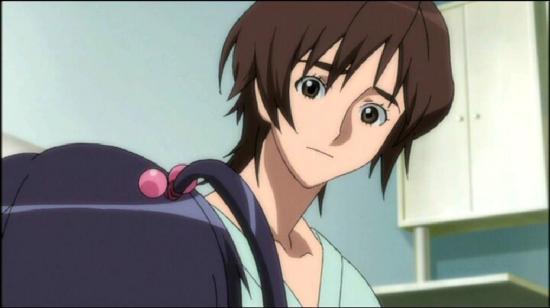
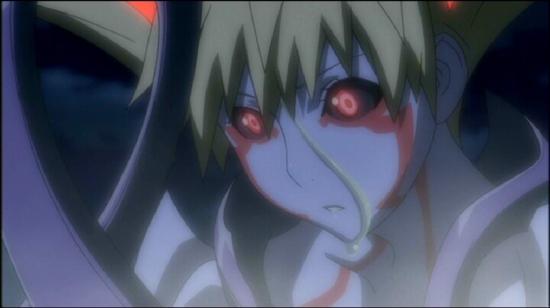
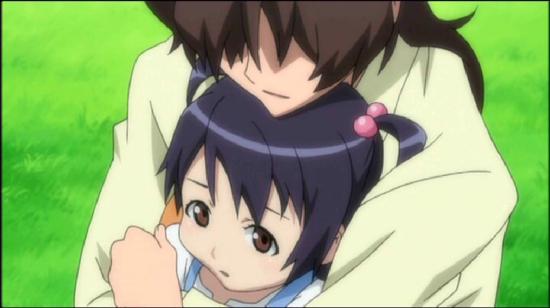
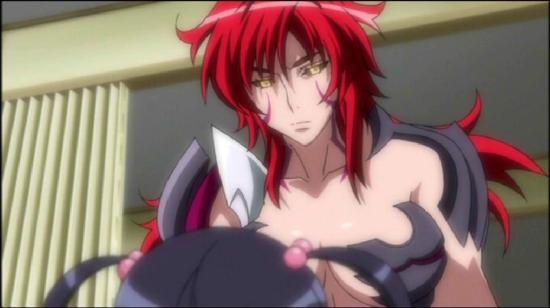
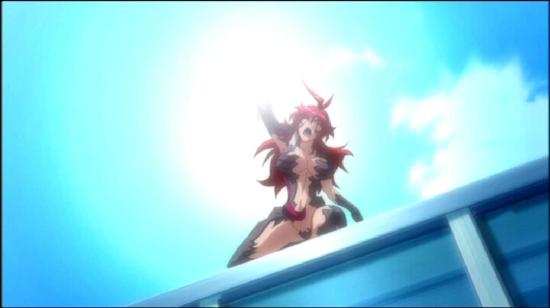
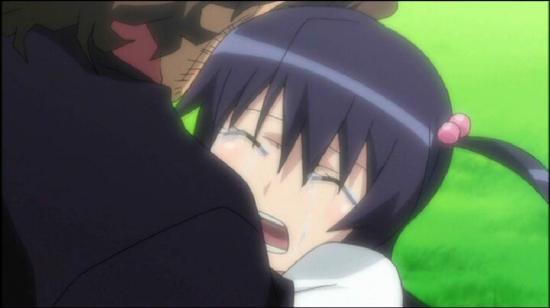
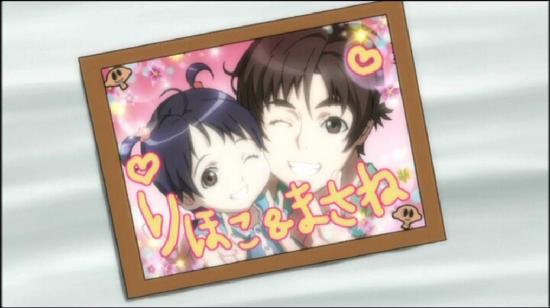
Your Opinions and Comments
Be the first to post a comment!